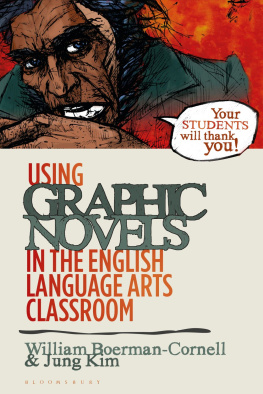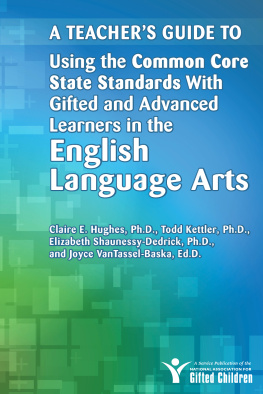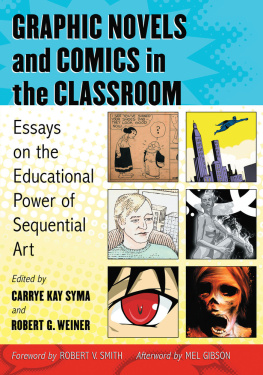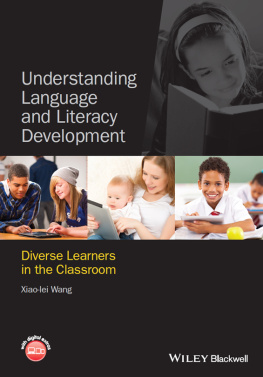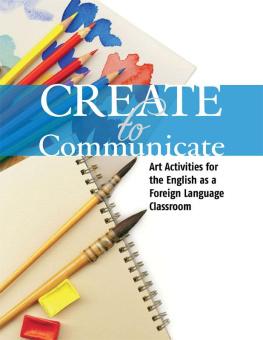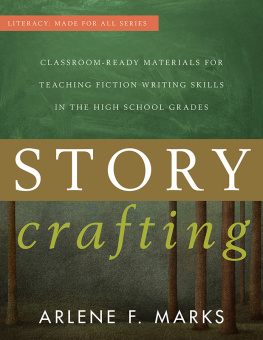Using Graphic Novels in the English Language Arts Classroom
Dedication
For Bill Teale (19472018) and all the other amazing teachers we have learned from.
Using Graphic Novels in the English Language Arts Classroom
William Boerman-Cornell Jung Kim

Contents
Who knew that when we first met almost fifteen years ago that we would be finishing our second book together? From fledgling scholar-academics, former high school teachers, and always avowed nerds, our interests have intersected, diverged, and come back together. This has been a fun and rewarding project that reflects our belief in the power of graphic novels in the classroom and our belief in teachers to always want to do more and better for their students. With that said, we would like to thank our colleague and nerd, Dr. Michael Manderino, for making this journey with us.
Maria Giovanna Brauzzi is our editor at Bloomsbury. She has been a joy to work with. She sent back prompt and insightful responses to all of our inquiries and apparently she never sleeps.
Thank you to George OConnor who was generous enough to write the foreword for this book. Georges work is spectacular and if you havent yet read his Olympians Series, you should put this book down and go buy it immediately. Your students will love it and so will you.
Thanks to the creators and publishers who gave us permission to use images from several amazing graphic novels in this book.
Every effort has been made to trace copyright holders and to obtain their permission for the use of copyright material. The publisher apologizes for any errors or omissions in the above list and would be grateful if notified of any corrections that should be incorporated in future reprints or editions of this book.
We are grateful to all those who answered our survey and shared their expertise, including George Biggs, Amber Funderburgh, Jill Gerber, Robert S. MacNeill, Elizabeth Eason Martin, Sara Johnson, Kristy Medema, and Ronell Whitaker.
Jung is first and foremost grateful to Bill, whose Calvinist work ethic, as he describes it, kept them on task and focused. His ability to work endlessly is simultaneously horrifying and humbling. His humor and willingness to include food in all work meetings will always be much appreciated. Jung is also grateful to her university for the sabbatical she received, which allowed her the time and space to complete this project. While she loves teaching, it is quite something to have time to read until her eyes hurt and write about something she loves
Vertigo Comics, an imprint of DC, was Jungs gateway into the comics/graphic novel world and it is sad to say goodbye to them.
Jung would also like to thank her children, Wyeth and Iseul, who she only occasionally had to shove out of the way to get to the graphic novels first and her husband, Erik, who first introduced her to graphic novels; charmingly, he still asks if shes going to be paid back by work for every new book that is bought and brought into the housethe answer is always no. Finally, she is grateful to her parents who always encouraged her to read and let her read wherever she wantedfrom bathtub to dinner table.
Bill is grateful that Jung kept him and Mike Manderino from embarrassing themselves at our first NRC Conference and that she continues to do so. He is glad she was willing to go through this book writing thing a second time and that she was willing to put up with his obsessive compulsive tendencies. Her thoughtful insights and connections to the Young Adult (YA) literature community has made this book what it is. He is also grateful for her no-nonsense personality and taste in coffee shops. He finds her running habit both inspiring and excessive.
William Teale was an amazing mentor. Bill misses him more than he can say and is grateful for Bill and Junko Yakotas hospitality, encouragement, and wisdom.
Trinity Christian College granted Bill a sabbatical to work on this book and he is thankful for the gift of time to focus on this project. Thanks too to his colleagues who covered for him while he was gone and shared in excellent and thoughtful discussion. Thanks also to his students who put up with his absence.
Several graphic novel creators were generous with their time and thoughts, including Ben Hatke, Marissa Moss, Victoria Jamieson, and George OConnor, who were honored guests of Trinitys Young Authors Festival, and Tillie Walden who had lunch with us at the ALAN conference in Houston.
Bill is grateful to his wife Amy who put up with his distractedness when he was working on chapters in his head, with the piles of books in the study, and with the hours he spent hunched over his Surface tablet. He is also grateful for his daughters, Kathryn and Frances, who have taught him a great deal about many things, not the least of which is how they think about what they read. Bill also would like to thank his mom and dad who read to him when he was little, bought him books, and even put up with his comic book collection. They are the ones from whom he inherited his work ethic. He also thanks his friends John and Rick and his brothers Tom and Mike for helping him think about stuff.
Finally, we are grateful for everyone who reads, teaches, and learns. If you do any of those things, you are this civilizations hope for the future.
By George OConnor
I have the coolest job in the world.
Let me backtrack; I should be more specific. Every person is different and every one of them will like different things that will help them decide what their coolest job is. Some people like fighting fires, some people like taming tigers. Some people like strapping themselves onto giant columns of jet fuel that blast them out beyond the gravitational pull of our planet to float around in a tiny space station eating dehydrated food and breathing recycled air for months at a time. Heck, some people probably even like filling out tax forms. (Ill believe that when I see it.)
For me , I have the coolest job in the world.
Let me introduce myself more properly. My name is George OConnor, and I was the kid who sat in the back of your class drawing pictures instead of paying attention. Now that Im grown up, I am a cartoonist. Cartoonist is an imperfect termdoes it mean I make animations? Do I draw gag cartoons, la the New Yorker ? Well, no, not necessarilybasically being a cartoonist means Im a person whose job is to write and draw comics.
Comics is another imperfect term. We all know what comics are, though they are surprisingly hard to defineessentially, theyre stories, told with words and pictures. They have panels and word bubbles and all that stuff. The imperfection comes in that not all comics are comicalthats a linguistic throwback to the days when the first comic books were just collections of previously published humorous newspaper strips. Nowadays, comics do not have to be funny. Id even go so far as to say the majority of comics are not funny. Imperfect term.
Because comics is an imperfect term, and one that had additionally accrued a fair amount of a bad reputation for being silly kids stuff, an attempt was made to replace comics with a new, better term: graphic novels.
Of course, it goes without saying that graphic novels is yet another imperfect term. The graphic part of graphic novels refers to the visual component of the story; that much is clear enough. But the novel parta novel being a fictional prose narrative of considerable lengthwell, thats not universal. Even a casual scan of breakout graphic novels reveals a lot of memoirs ( Maus , Persepolis , Fun Home ), to say nothing of all the nonfiction graphic novels of note ( March , Palestine , The 9/11 Report ). As of this writing, I myself have written and/or drawn fifteen so-called graphic novels, and only one of them could be considered an actual novel.

